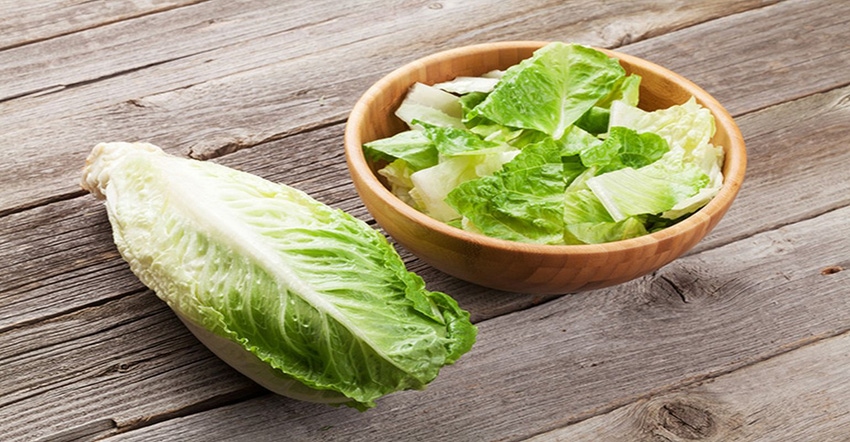Foodborne illness source attribution update
Leafy greens play a much bigger role in foodborne illnesses than generally recognized in the media and the consumers’ eyes.
January 24, 2020

Foodborne illness source attribution is a very complex subject, yet a vitally important subject that drives federal, state and local health departments in their efforts to reduce foodborne illnesses via food safety initiatives and policies.
As far as I know, there have only been two published reports on this subject, the one just released and one back in 2012 at a public meeting in the back of the cafeteria in the U.S. Department of Agriculture’s huge office building across the street from the headquarters.
(They hold a lot of meetings in the back of the cafeteria, probably because seating is limited to a degree.)
When I was at USDA overseeing the Food Safety & Inspection Service (FSIS), the Centers for Disease Control & Prevention (CDC) shared with me some preliminary data for attribution that I could not share with the world as it had not been sanitized and approved for public disclosure.
But it did show that leafy greens played a much bigger role in foodborne illnesses than generally recognized in the media and the consumers’ eyes.
Now we have the latest and the greatest, and it is being shared if one only takes the time to go to: https://cdc.gov/foodsafety/ifsac/pdf/P19-2017-report-TriAgency-508.pdf
But it is not being widely publicized and heralded in the media, maybe because it is pretty damning to some elements of the food industry.
In 2011 the feds formed the Interagency Food Safety Analytics Collaboration (IFSAC). This is a tri-agency group that consists of CDC, FSIS and the Food & Drug Administration.
IFSAC was originally chaired by my old friend from FSIS, Dr. David Goldman, one of the bureaucrats that I totally trusted in the days.
What IFSAC has proven is that federal agencies can, and do, talk with each other and work together to make our food safer.
No, we do not need a single food safety agency.
This group, charged with using analytics to come up with useful information, took a look at all foodborne illness outbreaks caused by E coli O157:H7, salmonella, listeria or campylobacter from 1998 to 2017.
There were 3,728 outbreaks. After eliminating those outbreaks for which a single food source could not be positively identified, or for which the food vehicle did not fall into one of 17 selected categories, they ended up looking at 1,329 outbreaks.
Because of changes and advances in epidemiology and investigations over the years, the last five years of outbreaks reviewed (2012-2017) provide 69% of overall information, the next most recent five years (2008-2012) provide another 26% of the total information used, so this is really a look at 2008-2017.
One last bit of detail before getting to the results:
Of the 236 Campylobacter outbreaks in the time period reviewed, the IFSAC group threw out 147 that were linked to unpasteurized milk. The thinking apparently was that nothing could be done to decrease the risk of consuming a product known to be high risk, so they focused on sources that could have the risk decreased through regulations by public health agencies or by industry use of science based treatments.
So, the results:
811 outbreaks caused by salmonella, 242 by E. coli O157:H7, 40 by listeria and 89 by campylobacter.
E. coli and listeria were largely represented by two food categories; salmonella and campylobacter were more across the board.
Listeria outbreaks were attributed to dairy (50%) and fruits (30%). Pork 0.1%
E coli O157:H7 outbreaks were attributed to vegetable row crops (46.3%) [no that is not a typo] and to beef (25.8%). Pork 0%.
Campylobacter blamed chicken 50% of the time, followed by other seafood (12%) and turkey at 10%. Pork 1.7%
Salmonella had lots of sources of attribution, leading with seeded vegetables (17%), chicken (14%), fruits (12%), pork (10%), eggs (8%), other produce, like nuts (8%) and beef (6%). Turkey and row crops were at 5-6%.
Some take homes:
Why can row crops, i.e. romaine lettuce, continue to make headlines every single growing season for E. coli foodborne illnesses while the animal agriculture industry and its associated packing and processing plants continue with the intense FSIS scrutiny?
Why all the fuss about the New Swine Inspection System when the only time pork shows up in this report with a number worth repeating is for salmonella? And I think those involved with that industry will support my theory that the salmonella associated with pork is most likely coming from lymph nodes, a problem for which no amount of FSIS inspection of carcasses will alleviate.
Sprouts. I will not eat raw sprouts because of the way they are grown; dark, moist and warm environments, a road map for a disaster. But they hardly registered in the report. My guess is that it’s related to a low amount of consumption compared to the amount of chicken and row crops eaten on a daily basis. But I am open to other ideas.
Listeria outbreaks are few, but when you look at a 50% attribution to dairy, FDA regulated, and to the risk to pregnant women and their unborn babies, you have to wonder why one in that risk category would want to consume soft cheese made from unpasteurized milk?
FSIS has a zero-tolerance level for listeria, FDA not so much. Hmm?
USDA-FSIS is repeatedly criticized and blamed and overseen by House and Senate committees and the GMOs when there is an outbreak related to meat and/or poultry, yet three of the four foodborne illness categories, E. coli, salmonella and listeria, had related sources of attribution that are FDA regulated; vegetable row crops, seeded vegetables, and dairy respectively.
Go figure.
About the Author(s)
You May Also Like



